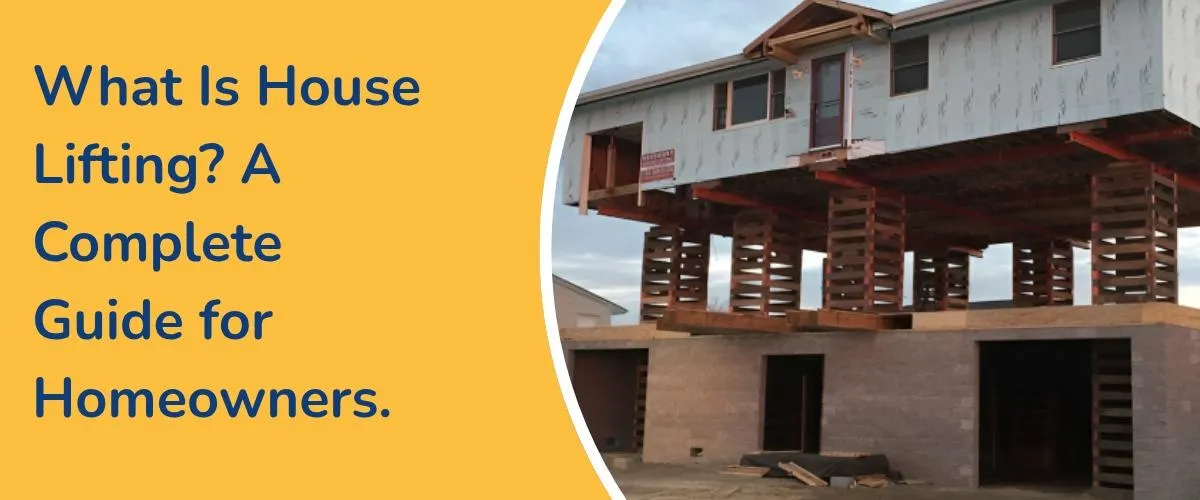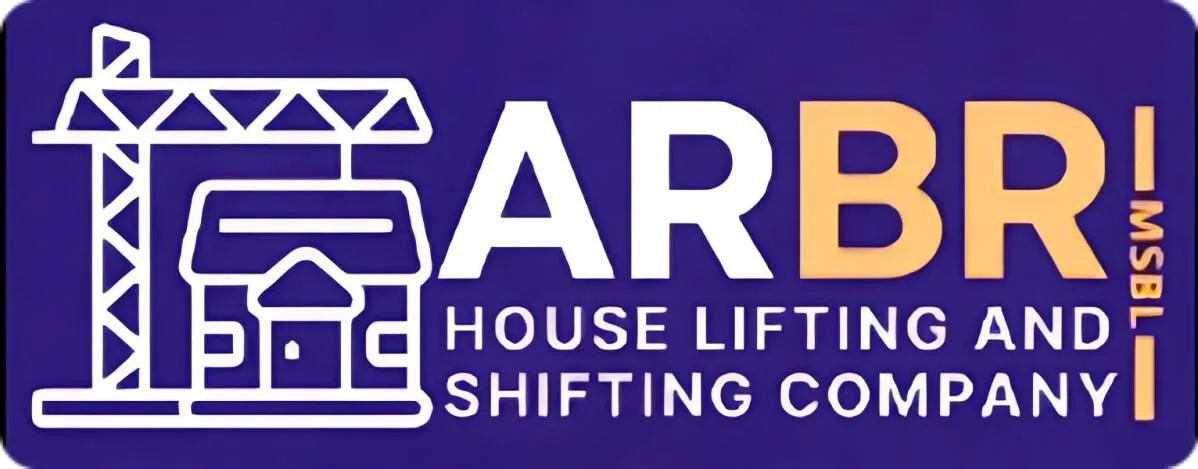8059168705 ,7900003073 , 9896639926
Barara Road Village Babain, Kurukshetra, Haryana - 136156

What Is House Lifting? A Complete Guide for Homeowners
A house is one of the largest investments that one can have. However, can you imagine that your house is in a flood-prone area, or your foundation starts to crack and become uneven with time?
Destruction and reconstruction are not necessarily the only ways of doing it. It is at that point in time that house lifting, also referred to as building elevation, comes in as a cost-effective, long-term, and intelligent solution.
This is a step-by-step guide to the process that we are going to discuss, house lifting itself, how it works, its benefits, cost, safety issues, and all the things that a homeowner must learn before embarking on this life-changing process.
What Is House Lifting?
House lifting is the procedure of elevating an already existing structure on its original base with the application of hydraulic jacks, steel beams and exact engineering. When the building is raised, the foundation is then built under the foundation and makes the house safer, more robust and taller off the ground.
This process doesn’t damage your existing structure — instead, it strengthens it. It’s commonly used to:
1. Protect homes from floods and waterlogging,
2. Repair or replace damaged foundations,
3. Add extra floors or a basement, and
4. Level uneven structures caused by soil settlement or poor initial construction.
At ARBR House Lifting Services, our engineers and technicians use modern hydraulic jacking systems and laser leveling tools to lift homes safely and accurately — often with zero damage to the structure.
Why Homeowners Choose House Lifting.
There are many reasons why homeowners across India are turning toward professional house lifting rather than rebuilding from scratch. Here are the top benefits:
1. Protection from Flooding and Water Damage
If your home is located in a low-lying or coastal area, it’s at constant risk during monsoons or floods. Raising your house a few feet above the ground level can prevent severe flood damage, saving you from recurring repair costs and emotional stress.
2. Repairing Foundation Damage
Over time, foundations can weaken due to soil erosion, poor drainage, or age. House lifting allows experts to replace or repair the foundation without demolishing the entire building — ensuring long-term stability and safety.
3. Cost-Effective Alternative to Rebuilding.
Demolishing and reconstructing a house can be extremely expensive and time-consuming. House lifting, on the other hand, can cost 40%–60% less while delivering the same benefits of a stronger, elevated structure.
4. Adds Space or New Floors
Want a basement, parking space, or extra floor? Lifting your house provides the flexibility to add usable space below or above without altering the main structure.
5. Increases Property Value
An elevated, flood-resistant home with a new foundation holds higher resale value and attracts more buyers. It’s an investment that pays off both practically and financially.
The Step-by-Step Process of House Lifting
Lifting a house is not just a mechanical job — it’s a blend of engineering precision, safety planning, and teamwork. Here’s how professionals like ARBR carry it out:
Step 1: Site Inspection and Feasibility Study
A detailed survey is conducted to examine the structure’s strength, soil type, foundation condition, and water table level. Engineers then decide the lifting height, jacking points, and support structure.
Step 2: Preparation and Utility Disconnection.
Before lifting begins, all water, gas, and electrical lines are disconnected safely. Interior items are removed or secured to prevent damage.
Step 3: Installing Hydraulic Jacks and Steel Beams
Heavy-duty steel I-beams are inserted beneath the structure, supported by synchronized hydraulic jacks. These jacks are placed at multiple points to ensure even lifting.
Step 4: The Lifting Process
The actual lift happens slowly — usually 1 to 3 inches at a time. Every movement is monitored carefully to maintain the building’s balance and structural integrity.
Step 5: Foundation Repair or Reconstruction
Once lifted to the desired height, the old or damaged foundation is repaired, reinforced, or replaced with a new one. For flood protection, a higher plinth wall or reinforced concrete base is constructed.
Step 6: Lowering and Finishing Work
After the new foundation sets properly, the house is carefully lowered back onto it, and all utilities are reconnected. Any cracks or cosmetic damage are repaired, leaving your home ready for living again.
Safety and Technology in Modern House Lifting
In earlier times, house lifting was considered risky or only suitable for small structures. But today’s advanced hydraulic systems, laser alignment tools, and steel support frames have made it one of the safest construction techniques.
At ARBR House Lifting Services, we follow international safety standards and use synchronized hydraulic systems to maintain uniform pressure at every jacking point — ensuring that the house lifts evenly, without tilting or cracking.
We also use real-time monitoring systems to measure elevation levels and stress distribution. This level of precision guarantees safety even for large or multi-storey buildings.
Cost Factors Involved in House Lifting
The total cost of house lifting depends on several factors, including:
1. Size and structure of the building
2. Current condition of the foundation
3. Lifting height required
4. Soil type and site accessibility
5. Material and manpower needed
On average, house lifting in India can range between ₹800 to ₹2,000 per square foot, depending on complexity. Though it may seem like a big investment, it’s still significantly cheaper than rebuilding — and offers peace of mind for decades.
Is House Lifting Suitable for Every Home?
Most houses can be picked without any accidents, though there are some exceptions
.
The houses, which have an extremely damaged structure, poor soil bearing capability, or incompatible building materials, may need to have further reinforcement or an alternative solution.
It is why it is necessary to have a professional checkup before deciding to make any decision. Professionals examine the layout, load bearing capacity and soil of your home to find out whether lifting is possible and in what way it may be done in the safest way.
Real-World Use Cases
1. Flood-Prone Homes: Many homeowners in coastal or riverfront regions like Kerala, Odisha, and West Bengal lift their homes to stay above flood level.
2. Foundation Failure: Homes suffering from cracks or tilting due to weak foundations can be stabilized and realigned.
3. Basement or Parking Addition: Urban homeowners often lift their houses to create ground-floor parking or extra storage space.
4. Old Heritage Homes: Old houses are lifted carefully to repair foundations without damaging the original structure.
Why Choose ARBR House Lifting Services
1. 15+ years of experience in professional house and building lifting
2. Advanced hydraulic jacking systems ensuring 100% safety
3. Trained engineers and technicians
4. Customized solutions for different soil and structure types
5. Zero-damage guarantee during lifting process
6. Complete project transparency and supervision.
We take pride in having successfully lifted hundreds of homes across India, helping families safeguard their properties from floods, structural damage, and time.
Final Thoughts:
House lifting is no longer a rare or dangerous activity but an intelligent, green and economical method of securing your house till the next generations arrive. Flood protection, foundation repair or just more space, house lifting will entirely change the safety and the value of your house.
ARBR House Lifting Services is an engineering firm that integrates engineering skills and cutting-edge technology to provide damage-free damage-dependent lifting solutions.
Location:
Barara Road Village Babain, Kurukshetra, Haryana - 136156
+919050898105
Call: +918059168705 , +917900003073 , +919896639926
